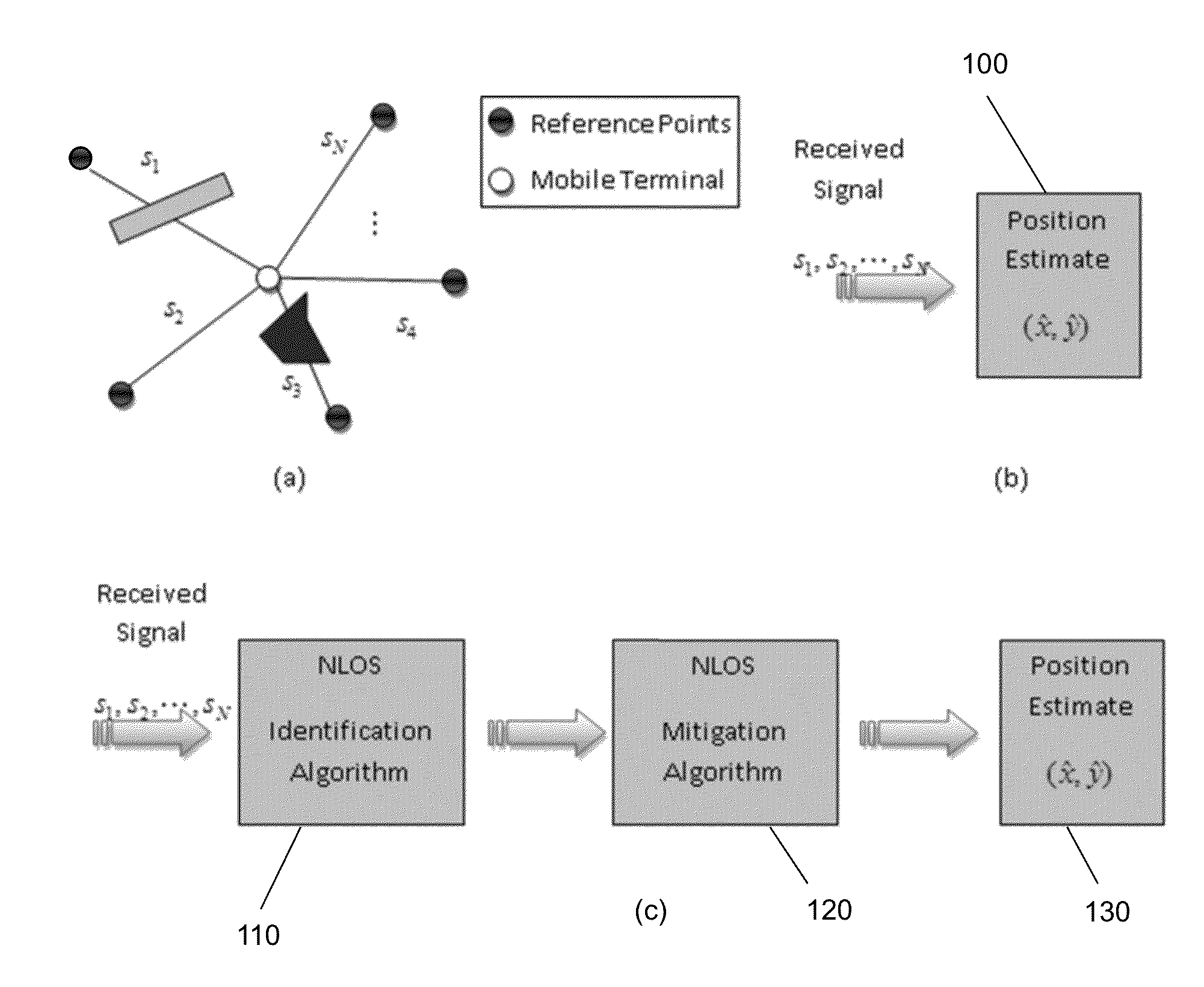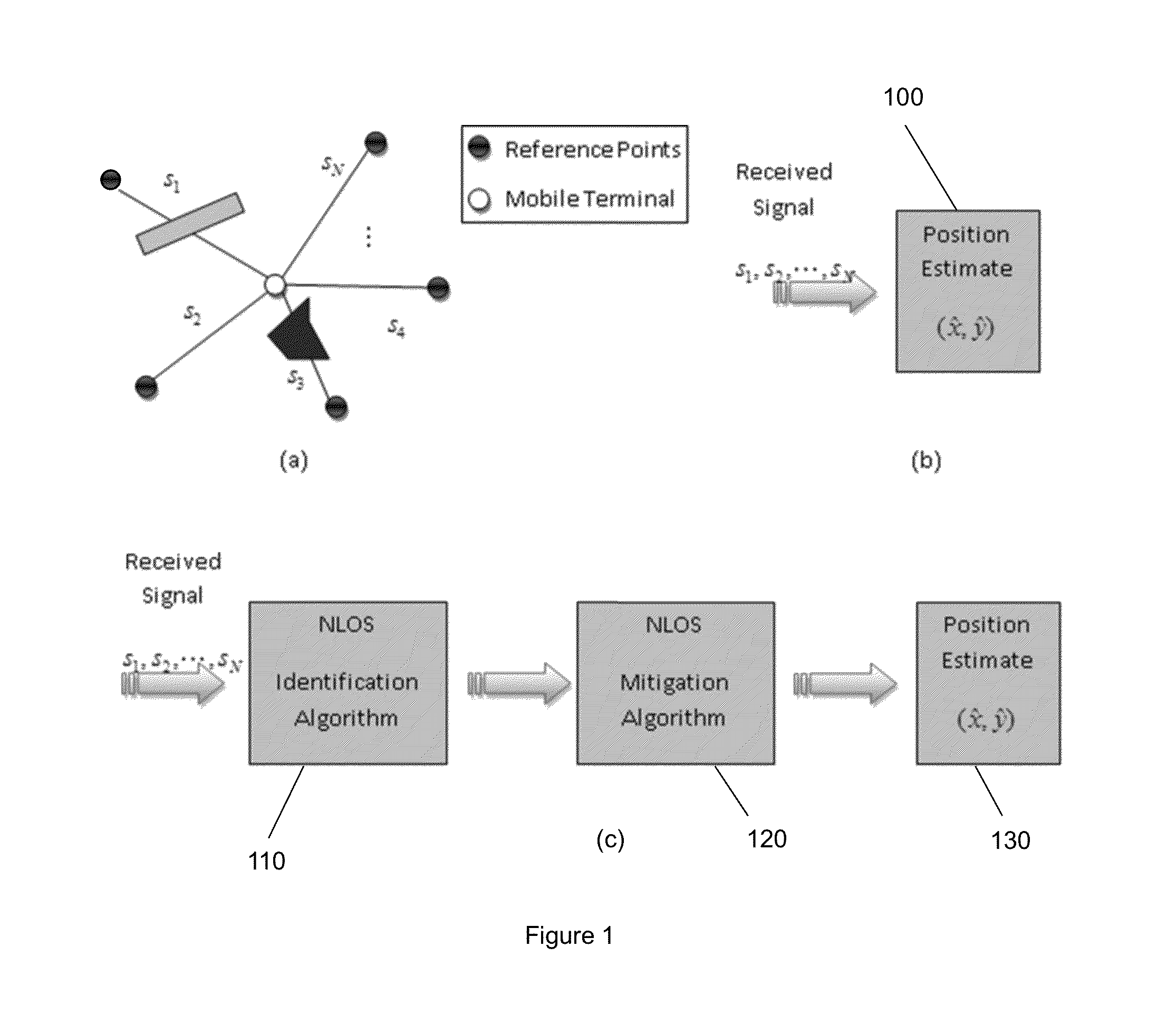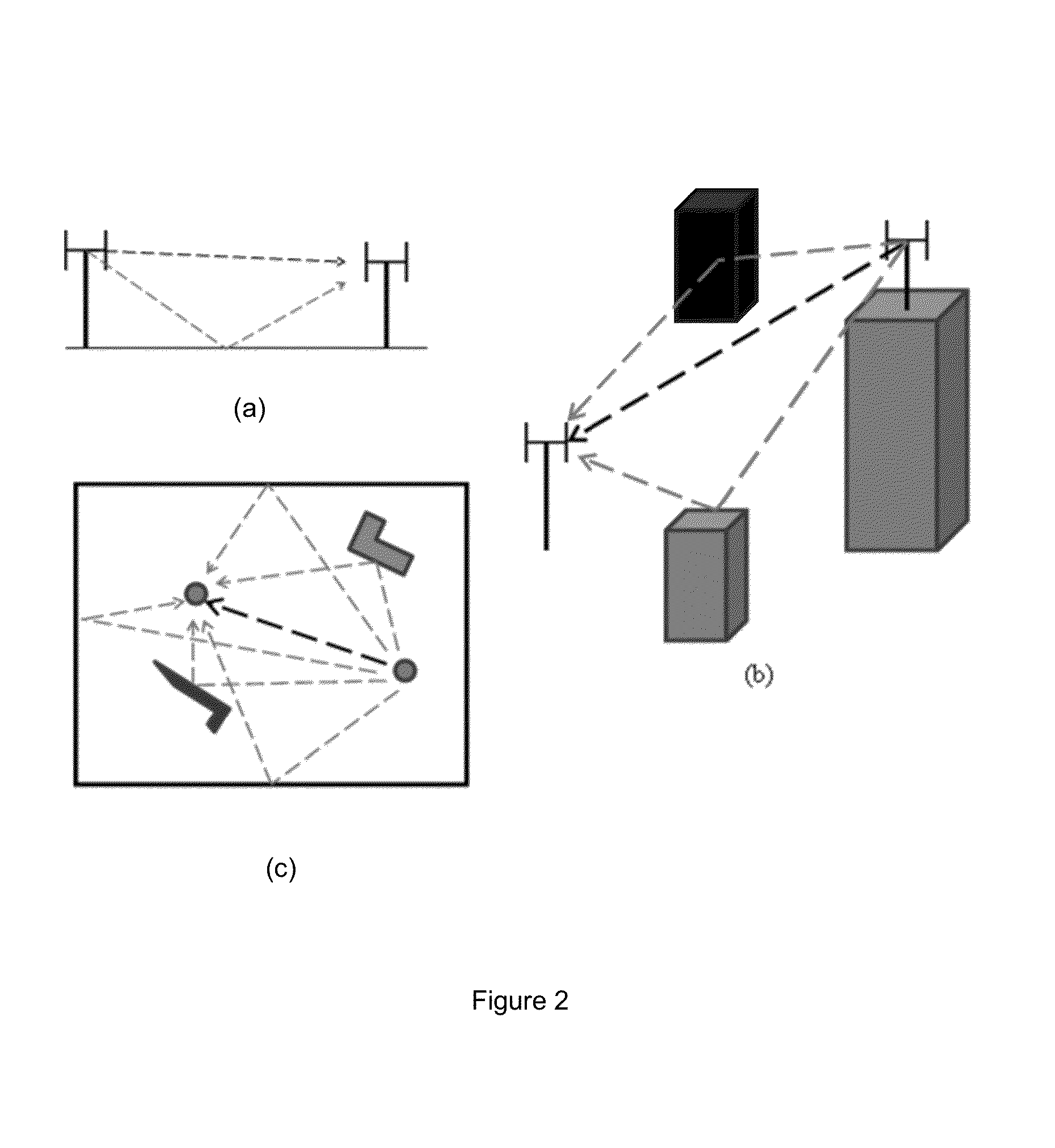Methods and devices for channel identification
a channel identification and channel technology, applied in the direction of transmission monitoring, receiver monitoring, instruments, etc., can solve the problems of significant localization errors, affecting the reliability and accuracy of positioning systems, and not always guaranteed availability of los signals, so as to accurately determine the position of the signal in an nlos environment
- Summary
- Abstract
- Description
- Claims
- Application Information
AI Technical Summary
Benefits of technology
Problems solved by technology
Method used
Image
Examples
Embodiment Construction
[0075]Accordingly, at its broadest, a first aspect of the present invention provides a method of identifying the transmission channel of a signal using the entropy of the channel impulse response of that signal.
[0076]A first aspect of the present invention preferably provides a method of identifying the transmission channel condition of a signal received by a receiver, the method including the steps of: estimating the entropy of the channel impulse response of said signal; and determining, from the estimated entropy, whether said signal includes components that have traversed a direct path and non-direct paths or consists of components that have traversed non-direct paths only.
[0077]The method of this aspect provides an NLOS identification technique that distinguishes channel conditions based on entropy estimation of the channel. Since the Channel Impulse Response (CIR) is a characterization of the multipath channel between a transmitter and a receiver, it is possible to devise an e...
PUM
 Login to View More
Login to View More Abstract
Description
Claims
Application Information
 Login to View More
Login to View More - R&D
- Intellectual Property
- Life Sciences
- Materials
- Tech Scout
- Unparalleled Data Quality
- Higher Quality Content
- 60% Fewer Hallucinations
Browse by: Latest US Patents, China's latest patents, Technical Efficacy Thesaurus, Application Domain, Technology Topic, Popular Technical Reports.
© 2025 PatSnap. All rights reserved.Legal|Privacy policy|Modern Slavery Act Transparency Statement|Sitemap|About US| Contact US: help@patsnap.com



